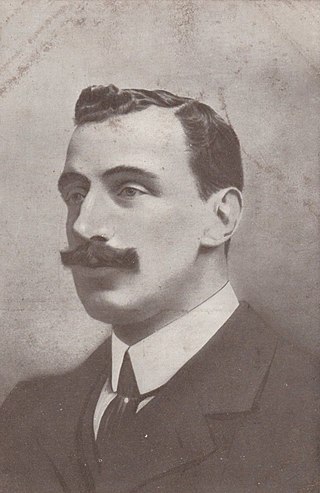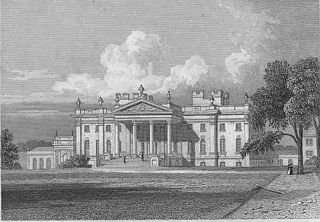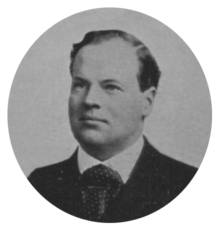
Baron Feversham is a title that has been created twice, once in the Peerage of Great Britain and once in the Peerage of the United Kingdom. The first creation, in the Peerage of Great Britain, came in 1747 when Anthony Duncombe, who had earlier represented Salisbury and Downton in the House of Commons, was made Lord Feversham, Baron of Downton, in the County of Wilts. He had previously inherited half of the enormous fortune of his uncle Sir Charles Duncombe. However, Lord Feversham had no sons and the barony became extinct on his death in 1763. The peerage was revived in the Peerage of the United Kingdom in 1826 in favour of his kinsman Charles Duncombe, who was created Baron Feversham, of Duncombe Park in the County of York. He was a former Member of Parliament for Shaftesbury, Aldborough, Heytesbury and Newport. Duncombe was the grandson of Thomas Duncombe, son of John Brown by his wife Ursula Duncombe, aunt of the first Baron of the 1747 creation. Ursula had inherited the other half of her brother Sir Charles Duncombe's fortune. Lord Feversham son, the second Baron, sat as a Conservative Member of Parliament for Yorkshire and the North Riding of Yorkshire.
Earl of Feversham is a title that has been created three times, once in the Peerage of England, once in the Peerage of Great Britain and once in the Peerage of the United Kingdom. All three creations are now extinct.

Duncombe Park is the seat of the Duncombe family who previously held the title Earls of Feversham. The title became extinct on the death of the 3rd Earl in 1963, since when the family have continued to hold the title Baron Feversham. The park is situated one mile south-west of Helmsley, North Yorkshire, England and stands in 300 acres (120 ha) of parkland. The estate has a commanding location above deeply incised meanders of the River Rye within the North York Moors National Park.
William Bouverie, 1st Earl of Radnor FRS DL was a British peer, styled Hon. William Bouverie from 1747 until 1761.

Archibald Acheson, 3rd Earl of Gosford KP, styled Viscount Acheson between 1807 and 1849, was a British peer and Member of Parliament.

Sir William Gervase Beckett, 1st Baronet was a British banker and Conservative politician.

Charles Duncombe, 1st Baron Feversham, was a British Member of Parliament.

William Ernest Duncombe, 1st Earl of Feversham, known as The Lord Feversham between 1867 and 1868, was a British Conservative politician.
Charles William Slingsby "Sim" Duncombe, 3rd Earl of Feversham DSO, styled the Hon. Charles Duncombe until 1915 and then Viscount Helmsley until he succeeded his father in 1916, was a British Conservative politician.

Charles John Chetwynd-Talbot, 19th Earl of Shrewsbury, 19th Earl of Waterford, 4th Earl Talbot, PC, styled Viscount Ingestre between 1849 and 1868, was a British Conservative politician. He served as Captain of the Honourable Corps of Gentlemen-at-Arms under Benjamin Disraeli between 1875 and 1877.

Francis Richard Charles Guy Greville, 5th Earl of Warwick, styled Lord Brooke until 1893, was a British Conservative politician.

William Reginald Duncombe, Viscount Helmsley, was a British Conservative Party politician.
Charles Duncombe may refer to:

Helen Venetia Vincent, Viscountess D'Abernon was a British noblewoman, socialite and diarist.

William Duncombe, 2nd Baron Feversham, was a British peer with a large estate in the North Riding of Yorkshire. He was prominent in the affairs of the Royal Agricultural Society and owner of a prize-winning herd of short-horn cattle. He served as a Tory Member of Parliament (MP) for the Riding from 1832 to 1841, after which he sat in the House of Lords, having succeeded to the title on the death of his father. From 1826 to 1831 he had sat as an Ultra-Tory MP. He was the first MP to support Richard Oastler's campaign for Factory Reform, and gave it unwavering support for the rest of his life; in 1847 he seconded the Second Reading in the Lords of the Factory Act of that year.
(Charles Anthony) Peter Duncombe, 6th Baron Feversham, was a British nobleman and writer.

Anthony Duncombe, 1st Baron Feversham was a British landowner and politician who sat in the House of Commons from 1727 until 1747 when he was raised to the peerage as Baron Feversham.

Thomas Duncombe was a British politician who sat in the House of Commons between 1751 and 1779.
Sir Charles Frederick Richmond Brown, 4th Baronet TD DL was a British soldier.

Sir Frederick Ulric Graham, 3rd Baronet, was a British diplomat, soldier and landowner.












